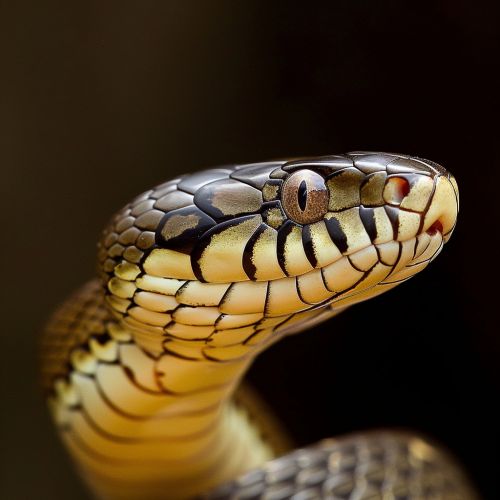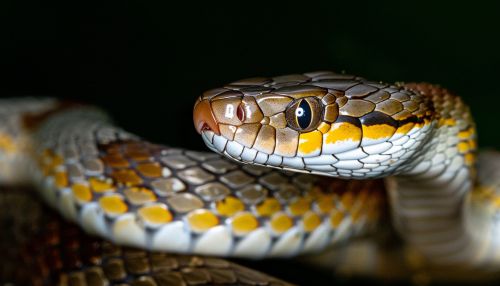Elapidae
Taxonomy and Evolution
The Elapidae family, known commonly as elapids, is a significant group within the order Squamata, suborder Serpentes, which includes some of the world's most venomous snakes. The family is named after the type genus Elaps, which is now a junior synonym of Micrurus. The taxonomic history of Elapidae is complex, with many revisions and changes over the years.
Elapids are believed to have evolved from a common ancestor with the family Viperidae during the Cretaceous period, around 100 million years ago. This divergence was likely driven by a combination of environmental changes and prey availability.


Characteristics
Elapids are characterized by their slender bodies, smooth scales, and distinctive head shape. They are typically small to medium-sized snakes, although some species, such as the King Cobra (Ophiophagus hannah), can reach impressive lengths.
One of the defining features of elapids is their fixed, hollow fangs at the front of the upper jaw, through which they deliver their potent venom. This venom is primarily neurotoxic, affecting the nervous system and causing paralysis, and in some cases, death.
Distribution and Habitat
Elapids have a wide distribution, found on every continent except Antarctica. They inhabit a variety of habitats, from deserts and grasslands to forests and marine environments. Some species, like the Sea Snake (Hydrophiinae), are fully adapted to aquatic life, while others, such as the Death Adder (Acanthophis), prefer terrestrial habitats.
Behavior and Ecology
Elapids are typically solitary animals, with most species being nocturnal. They are primarily ambush predators, using their potent venom to immobilize prey. Elapids feed on a variety of animals, including other snakes, lizards, birds, and small mammals.
Reproduction in elapids varies between species, with some laying eggs (oviparous) and others giving live birth (viviparous). In oviparous species, the female will typically lay her eggs in a hidden location and then leave them to develop independently.
Venom and Human Interaction
Elapid venom is highly potent and can be lethal to humans. However, not all elapids are dangerous to humans, and the risk often depends on the species and individual snake's size, age, and venom yield. Some species, such as the Taipan (Oxyuranus), are known for their particularly potent venom and aggressive behavior when threatened.
Despite their reputation, elapids play a crucial role in their ecosystems by controlling rodent and other small mammal populations. Additionally, elapid venom has been used in medical research and has contributed to the development of several life-saving antivenoms.
Conservation
Many elapid species are threatened by habitat loss, climate change, and human persecution. Conservation efforts for these snakes often involve habitat protection, public education, and in some cases, captive breeding programs.
